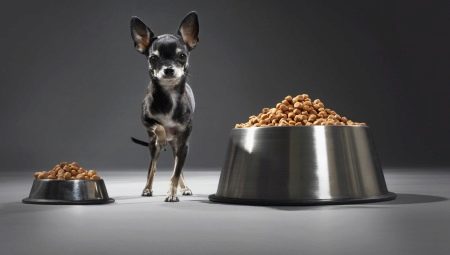Toy terriers are a breed of small dogs for keeping exclusively at home. As you know, miniature animals need special attention from the owner, and especially in proper nutrition. This is the key to their health and longevity. This feature is associated with the predisposition of dogs, which throughout their life look like puppies, to various diseases of the gastrointestinal tract. In order for your pet to be always cheerful and healthy, and his coat shiny, his diet should be full and balanced.

Kinds
Feed for dogs of small breeds are divided into two types, such as:
- natural - prepared independently from fresh products;
- dry - special balanced factory-made mixtures.
Which option to prefer, each owner of a puppy or adult dog decides for himself. It is important to remember that veterinarians recommend not using a mixed diet - feeding with both natural products and dry food at the same time. Better to dwell on one thing. In addition, the diet for the puppy may consist of natural ingredients, and as you grow older, you can gradually transfer it to dry mixes.

The nuances of dry food
When choosing a brand and manufacturer of dry food for your pet, you should definitely pay attention to the fact that it was designed specifically for small breed dogs. And you also need to choose only the highest quality feed, which includes components that are extremely useful for the "baby": meat, cereals, vitamins, vegetables and fruits in dry form.In no case should colorants contain dyes, soybeans, corn, as well as flavor enhancers that can have a detrimental effect on the dog’s stomach. Many manufacturers produce feed for different age groups: from a newborn puppy to dogs of advanced age.
The main distinguishing feature of the product is that Each category contains exactly the set of useful ingredients that the animal needs in a certain period of its life. Therefore, it is not only important to choose the right food itself, but also to check whether it matches the age of the pet.
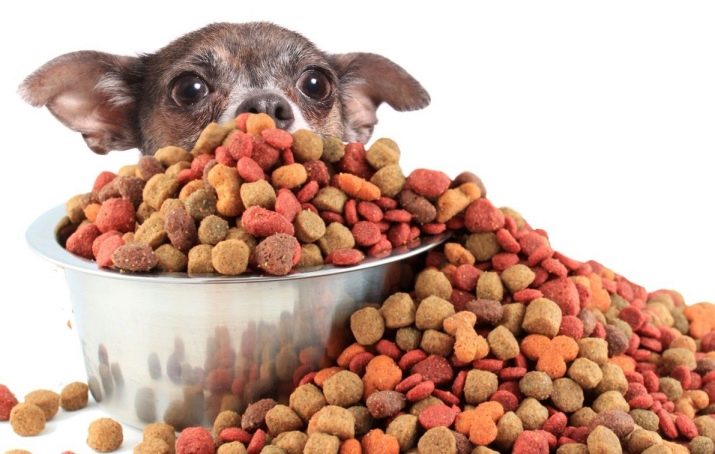
All feeds available in the distribution network, veterinarians are divided into several categories.
- Economy class. For example, Pedigree, Chappy. They are based on corn, which is the strongest allergen. And we already mentioned that the stomachs of our "little" friends are very sensitive and prone to allergies. Thus, this line of dry food is categorically contraindicated for use by toy terriers.
- Premium class. Pro Plan, Royal Canine, Hill's - these are feeds from verified manufacturers, in which there are no harmful additives, and the diet is completely balanced.
- Super premium. Eagle Pack Holistik, Acana, Orijen are first-class products from high-end manufacturers. As part of it, you will not only not find anything that is contraindicated for dogs, but also marvel at the widest range of its components: several varieties of meat, berries, fruits, herbs, vitamins and minerals. With this food, your four-legged friend will always be healthy and alert.
It is worth paying attention to the fact that it is impossible to overfeed individuals of small breeds. This leads to rapid obesity, loss of mobility and shortened life expectancy. The package shows the daily feed rate, depending on the mass of the toy terrier, and it should be followed.
When keeping a pet on a dry diet, carefully ensure that there is always fresh water in its bowl. This will exclude the development of urolithiasis.

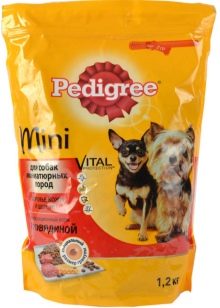
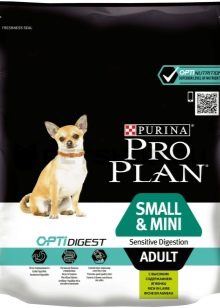
Organic food
If you decide to cook your own food for your fourth friend, then think especially well of a balanced diet for the period of puppyhood. It was at this time that the foundations of his health and education were laid. remember, that It is very important to feed the dog correctly from a very young age, giving it only wholesome food, and not leftovers from the owner's table. It is best to cook the toy terrier separately and daily.
Despite the miniature toychiki, they are predators. Meat products should prevail in their diet. Meat can be given to adult dogs and in raw form, having previously divided it into portions and kept it in the freezer for several hours. This is done in order to neutralize the product - low temperature will effectively get rid of parasites, if they are present in meat pieces.
After the freezing procedure, the meat delicacy must be thawed and brought to room temperature. Toy terriers should not be fed too cold or hot food - it should be slightly warm or at room temperature.
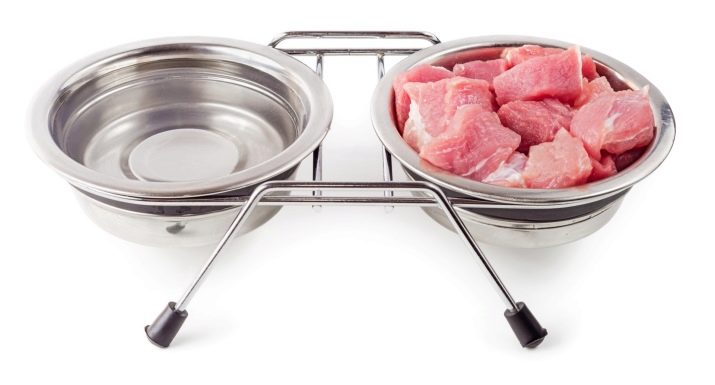
It is worth considering what can be given to dogs of this breed. Chicken meat and beef, which can be given both raw and boiled, should prevail on the menu. And also in the diet should be present the following products:
- cereals: rice, buckwheat, oat-flakes - they should be boiled;
- vegetables: zucchini, carrots, beets, tomatoes - preferably pre-stew;
- chicken yolkhard boiled;
- sea fish: salmon, pollock or hake - give only boiled;
- offal: heart, liver, scar - you can not boil, but be sure to douse with boiling water;
- cottage cheese or kefir;
- greens: dill or parsley;
- fruits: it is better to give apples and bananas in small quantities.

In addition, sometimes you can treat your pet with products such as:
- natural yogurt that does not contain dyes and sugar;
- a drop of honey;
- a few drops of vegetable or olive oil: usually 1-2 drops no more than twice a week;
- a piece of lamb raw or ready-made;
- low fat unsalted cheese.
As for salt, it can be added to food very rarely at the tip of a knife, while using exclusively sea salt. For a balanced diet, cereals and vegetables are needed for small dogs. But if animals refuse to eat them in their pure form, then you can try mixing them with meat so that the meat ingredients prevail.
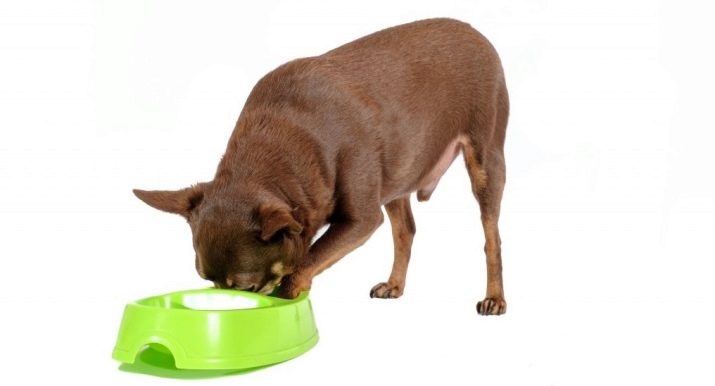
It is strictly forbidden to give toy terriers the following products:
- fatty, fried and smoked foods;
- any sweets containing sugar;
- salted foods: vegetables, fish and so on;
- flour products: cookies, bread, pasta;
- raw fish, eggs, offal;
- potatoes and beans;
- various sauces, mayonnaises, margarines and butter.
Important! Any food from the host table is contraindicated for the dog, because salt, spices and other components harmful to the animal’s body are always present in it.


Feed frequency
If a puppy has to be artificially fed from birth, then with his maturation, the frequency of food intake should be reduced, and the intervals between receiving food will gradually increase. So, newborn babies should be fed milk or a special mixture every two hours during the first two weeks. Further, the time between feedings should be increased so that when the puppy reaches one month, it is already 4 hours.
During the second month of life, babies are fed every 4 hours, that is, 6 times a day. In the third month, the number of feedings is reduced to 5 times, in the fourth - up to 4 times, and starting from the fifth month, they switch to three meals a day. When the dog reaches adulthood - 10 months - it can be fed 2 times a day, but at the same time. Best of all - immediately after a walk.
Important! Veterinarians do not recommend feeding before walking due to the fact that they are very mobile, and this can lead to inversion of the intestines.
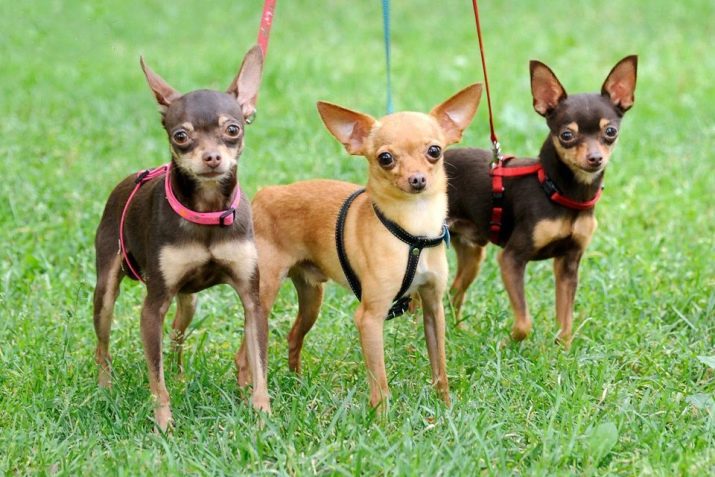
What is better to feed?
With a properly composed and balanced diet, any type of food: natural, dry or wet will be equally useful for a four-legged pet. The main thing is to observe the norm and frequency of feeding. But still, feeding dry ready-made formulations has several advantages over the natural diet, namely:
- fully balanced menu that does not require additional top dressing;
- prevention of tartar formation and plaque removal during chewing of crisp granules;
- convenient, does not take away time from the owner for cooking;
- uniformity and the same calorie content in a portion has a positive effect on the functioning of the digestive system;
- hygiene is easy to follow: dry products do not stain the dog’s coat and bed, and also do not deteriorate;
- the ability to choose a feed that is fully consistent with the age and needs of the dog.
You will learn more about caring for toy terriers from the next video.
